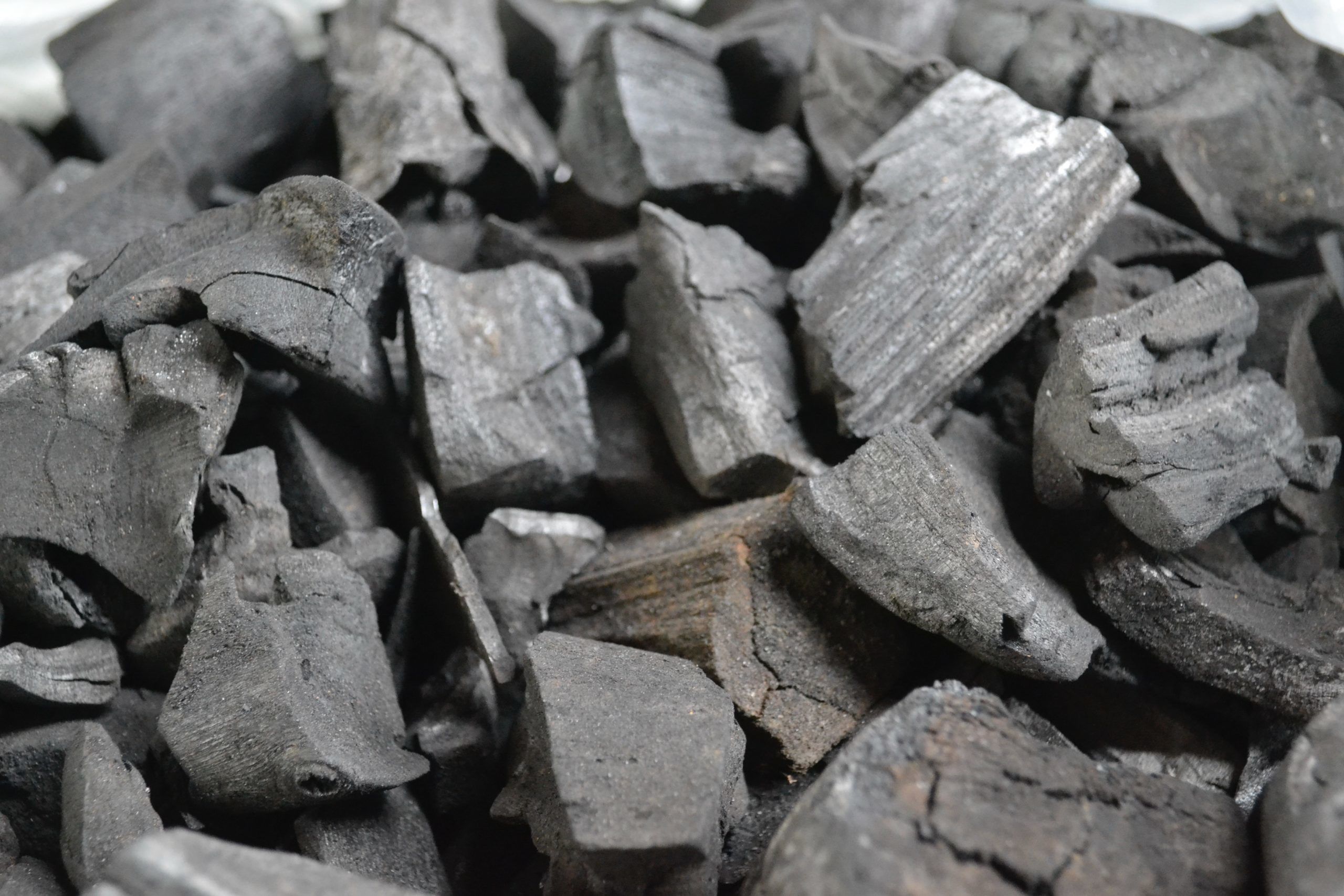More on Activated Charcoal: what is it, how pure is it, and where does it come from?
More on Activated Charcoal: what is it, how pure is it, and where does it come from?
“Activated charcoal” is not the same stuff you would use in a barbeque grill. Both grilling charcoal and activated charcoal start out in production the same way, through pyrolysis. Pyrolysis is “ thermal decomposition of organic materials in the absence of oxygen” (eeer.org). Pyrolysis converts normal carbon-rich materials like wood, coal, bamboo, or coconut shells into regular charcoal. Activated charcoal undergoes another step after pyrolysis: it is treated with gasses such as CO2, steam or air at high temperatures in order to increase the surface area, creating microscopic pores by erosion. The result is a surface with a negative charge, which is able to adsorb contaminants that are positively charged. So, whether you are using the activated charcoal to filter the air, water or a food-grade variety to cleanse your mouth with mouthwash, the charcoal should be able to adsorb an enormous amount of toxins before being saturated.
Activated charcoal is made from sources high in carbon like coal, coconut, or wood. I’ll discuss more about the ingredients and the process below.
Activated charcoal is produced in many forms for specific uses, such as:
water filtration
Air filtration
Wastewater processing
Removing color from foods or oils
Removing CO2 from air in submarines
Removing toxins from liver in liver dialysis
Extraction and purification of metals such as gold
Soil enrichment
And many more (source: charcoalhouse.com)
Some of the uses are for adsorption of larger molecules (such as decolorization of foods), and they are measured in macropore content (pores that are 2 nm and larger). Adsorption of smaller molecules calls for a measurement of micropore content, pores that are 2nm and smaller.
What distinguishes a really active batch from a not-so-active batch? It depends on the use, and for small micropore content, an iodine test is ideal. It shows how much iodine is adsorbed into the charcoal. Iodine is used to test activity of many other substances, like unsaturated oils, fats and waxes. These substances have molecules with double or triple bonds, that are very reactive toward iodine (britannica.com) and thus able to adsorb more than a saturated substance. The test is performed by filtering the charcoal with a known iodine concentrate, and then measuring the iodine remaining in the filtered liquid. The iodine number is defined as the milligrams of iodine adsorbed by one gram of material (charcoal) when the iodine residual concentration of the filtrate is standardized (researchgate.net). A high iodine number indicates that the charcoal has a great surface area and is highly adsorbent, while a lower number indicates it has lower surface area with lower adsorbent effect.
Iodine number is expressed in mg iodine adsorbed per gram of activated charcoal, and typically ranges from 500-1200 mg/g. If you are in doubt about the adsorption ability of the activated charcoal you purchase, inquire about this number. For example, SmartAir filters advertise that the activated charcoal used in their filters adsorbs 1200mg/g iodine. (smartairfilters.com)
Charcoal, worldwide, is generally detrimental to the environment. This is because in impoverished countries like Haiti and many African countries, charcoal is a main source of home cooking fuel, and production of charcoal comes from local residents cutting down trees and excavating stumps in order to make a better living. These charcoal pits also release harmful gases such as carbon monoxide, methane and smoke. On a commercial scale, it is also generally environmentally detrimental because traditional charcoal plants produce large amounts of greenhouse gases. There are some changes being made: one program is starting to change the deforestation trend and help communities preserve their natural resources, and another (Haritha Angara) is helping local charcoal suppliers to build more environmentally friendly kilns. Is activated charcoal sustainable? It can be. That depends on its base ingredient, from where it is sourced, and how the activated charcoal is made. A Korean study showed that making activated charcoal from wood waste results in less carbon output compared with other sources, such as coal, coconut shells, and olive waste. Production of activated charcoal from wood waste also saves carbon compared with alternative disposals such as landfilling or wood pellet production. Finally, using wood waste has a more costly production process than using virgin raw wood, but this can be offset by reduced costs for disposal of the wood waste. These result in “environmental credits” and financial sustainability for the wood waste producer and activated charcoal producer. Another “win-win” example is the production of activated carbon from coconut shells in a plant in Sri Lanka. This facility uses the methane given off during pyrolysis of the shells to fuel a boiler to create steam and run a turbine generator supplying electricity to the local community. If you care about how the products you purchase are made, it’s important to research their sources.
Beware of claims that a certain brand of activated charcoal is organic. There are several meanings of “organic” that can certainly be confused in the case of charcoal! In chemistry, any compound that contains a carbon atom, is organic. Under this definition, all charcoal is inherently organic because the majority of the substance is composed of carbon. In food manufacturing, end products are termed organic when they use organic materials, which are produced without chemical fertilizers, pesticides, and other artificial agents. In this case, food-grade activated charcoal could be considered “organic” if sourced from shells of coconuts that were organically grown. The bottom line is this: the FDA does not regulate the use of the term “organic” on food labels (fda.gov), and if the activated charcoal you purchase claims to be organic, you’ll need to do your own research on what that means!
Photo by Wander Fleur on Unsplash

